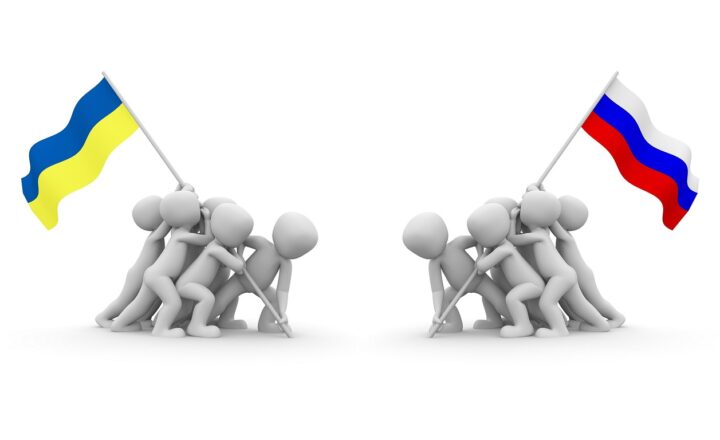What Makes a Great Leader? Lessons from History’s Best
November 10, 2024

Throughout history, great leaders have emerged from various cultures and backgrounds, leaving lasting legacies that continue to inspire generations. From political figures and military commanders to social activists and business moguls, the qualities that define effective leadership have long been studied and admired. In this article, we will explore what makes a great leader, drawing insights from some of the most prominent figures in history.
1. The Definition of Leadership
Leadership is often defined as the ability to influence and guide individuals or groups towards the achievement of goals. However, effective leadership goes beyond mere authority; it encompasses vision, integrity, empathy, and the ability to inspire others. Great leaders inspire loyalty, trust, and enthusiasm among their followers, creating environments where creativity and collaboration can flourish.
Leadership is not limited to a position or title; it can manifest in different forms across various spheres of influence. Examples include historical figures like Mahatma Gandhi, who led through nonviolent resistance, or Winston Churchill, who galvanized Britain during World War II through his powerful speeches and unwavering resolve.
2. Key Qualities of Great Leaders
While every leader is unique, certain qualities are commonly associated with effective leadership:
- Vision: Great leaders have a clear vision of what they want to achieve and can articulate that vision compellingly. They create a roadmap for their teams, emphasizing the importance of long-term goals while maintaining flexibility to adapt to changing circumstances.
- Integrity: Trust is the cornerstone of effective leadership. Leaders who act with integrity, uphold ethical standards, and align their actions with their values earn the respect of their followers. Historical figures like Nelson Mandela exemplified integrity in both his personal and political life, becoming a symbol of resilience and moral strength.
- Empathy: Great leaders understand the importance of connecting with their teams on a personal level. Empathy allows leaders to be attuned to the needs, concerns, and motivations of their followers, fostering a supportive environment. Mother Teresa exemplified empathetic leadership through her selfless dedication to helping the destitute and sick, demonstrating that compassion can inspire monumental change.
- Decisiveness: Effective leaders are decisive and able to make tough choices, especially in times of crisis. Indecision can lead to chaos and confusion. A historical example can be seen in Franklin D. Roosevelt, whose bold actions during the Great Depression and World War II demonstrated decisiveness that played a vital role in shaping modern America.
- Communication Skills: Clear and effective communication is essential for successful leadership. The ability to articulate goals, expectations, and feedback keeps teams aligned and motivated. Martin Luther King Jr. is celebrated for his powerful oratory skills that galvanized the Civil Rights Movement in the United States, showcasing the power of words in inspiring change.
3. Lessons from Historical Leaders
Let’s explore the leadership styles of several historical figures and the lessons we can learn from them.
Mahatma Gandhi: Leadership Through Nonviolence
Mahatma Gandhi is often recognized for his philosophy of nonviolent resistance. His ability to mobilize millions through peaceful protests while maintaining high ethical standards highlights the power of nonviolence in leadership. Gandhi’s belief in personal responsibility and fostering change through collective action serves as a powerful lesson in moral leadership.
Winston Churchill: Resilience in Adversity
During one of the darkest periods in modern history, Winston Churchill emerged as a legendary leader who inspired hope and resilience among the British people during World War II. His fiery speeches and refusal to surrender established him as a symbol of strength, teaching us that great leaders shine brightest in times of adversity and uncertainty.
Nelson Mandela: Forgiveness and Reconciliation
Nelson Mandela’s leadership journey is marked by his ability to promote reconciliation and healing in a divided nation. After spending 27 years imprisoned, he emerged not with a thirst for revenge, but instead as a champion of unity and peace. His story illustrates the transformative power of forgiveness and the importance of listening and understanding differing perspectives.
Mother Teresa: Compassionate Leadership
Mother Teresa dedicated her life to serving the poorest of the poor and exemplified servant leadership. Her unwavering commitment to helping those in need teaches modern leaders the importance of compassion, humility, and prioritizing the well-being of others over personal ambition.
4. The Importance of Adaptability
One vital takeaway from studying great leaders is their adaptability. History is filled with challenges, and the ability to navigate unforeseen circumstances is a hallmark of effective leadership. Leaders must remain open to change, continuously learning and evolving to respond to the needs of their followers and the society they serve.
For instance, leaders like Steve Jobs transformed the way we communicate and interact through technology. His ability to anticipate market trends and adapt to consumer needs led Apple to become one of the most valuable companies globally, showcasing how innovation and adaptability are fundamental to effective leadership.
5. Conclusion: Emulating Great Leadership
The qualities of great leaders—vision, integrity, empathy, decisiveness, and effective communication—serve as timeless lessons from history. By learning from these figures, we can cultivate our leadership skills and inspire others to pursue positive change.
Whether you are in a formal leadership role or looking to influence others in your life, embodying these traits can help pave the way for successful outcomes. As we reflect on history’s best leaders, let us strive to emulate their admirable qualities and become leaders who shape a better future for ourselves and others.
Through the lens of history, we see that leadership is not merely about power or control; it’s about serving others, inspiring action, and leaving a lasting impact. As we stand on the shoulders of giants, let us continue to learn from their wisdom and work towards becoming great leaders ourselves.








